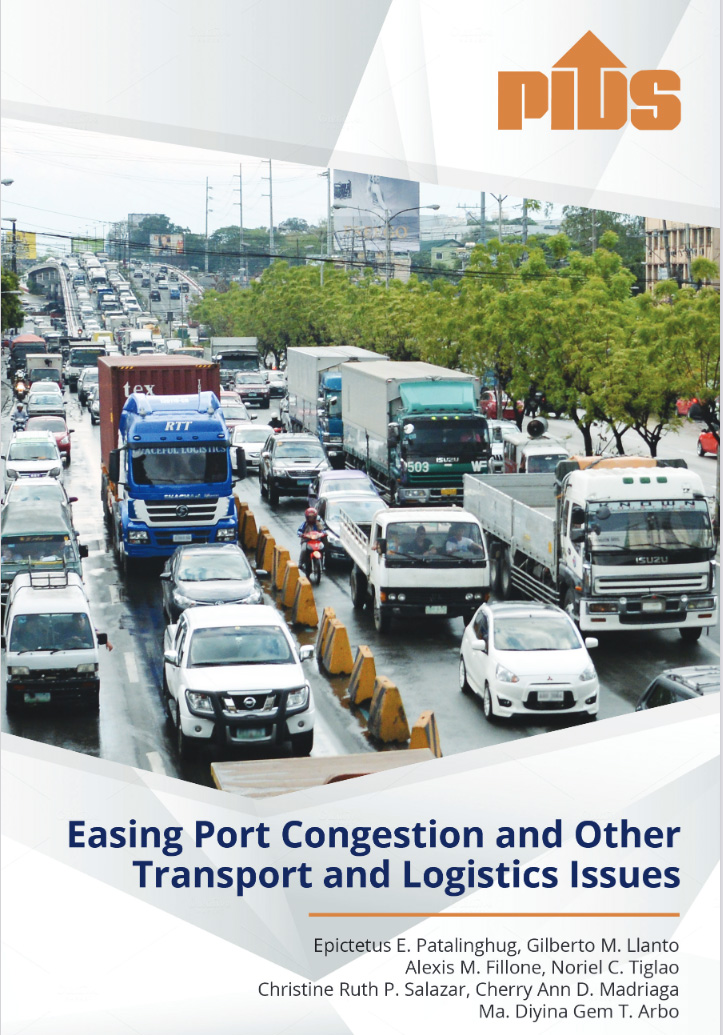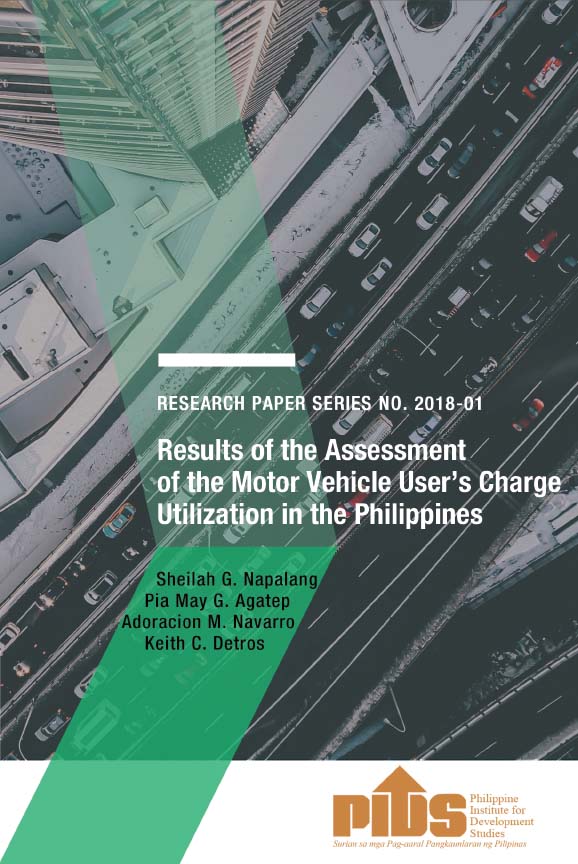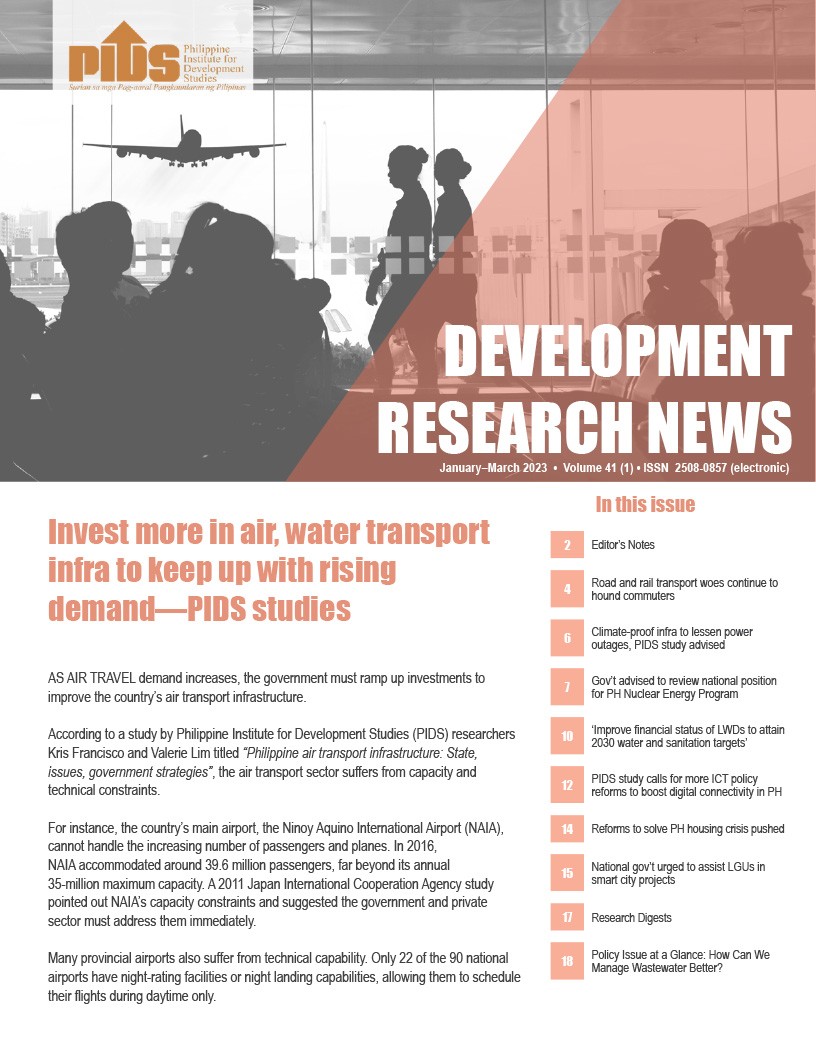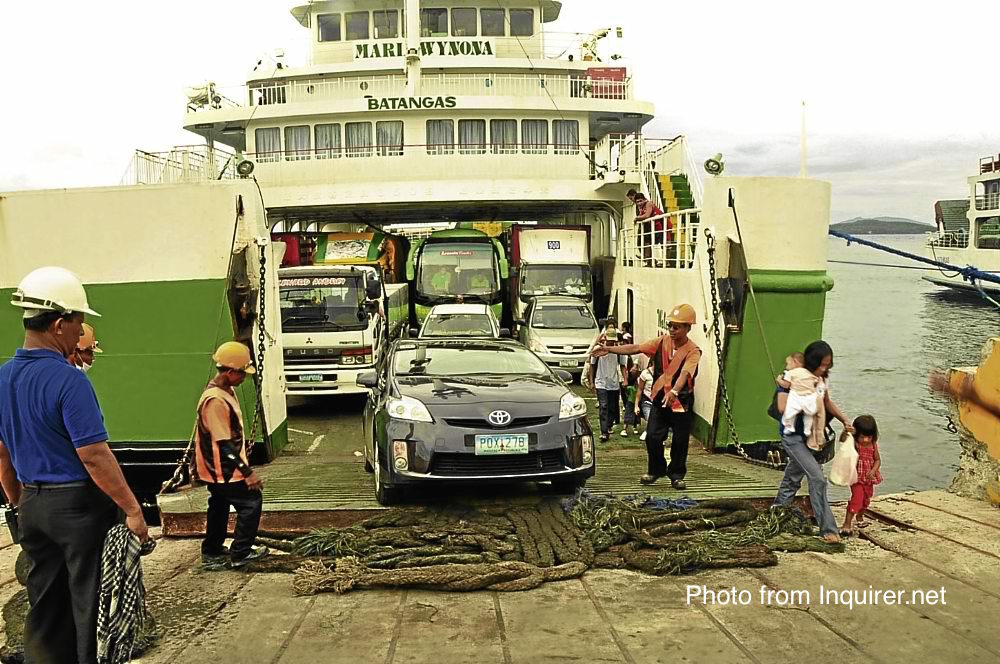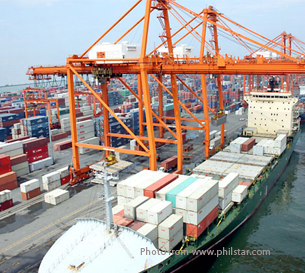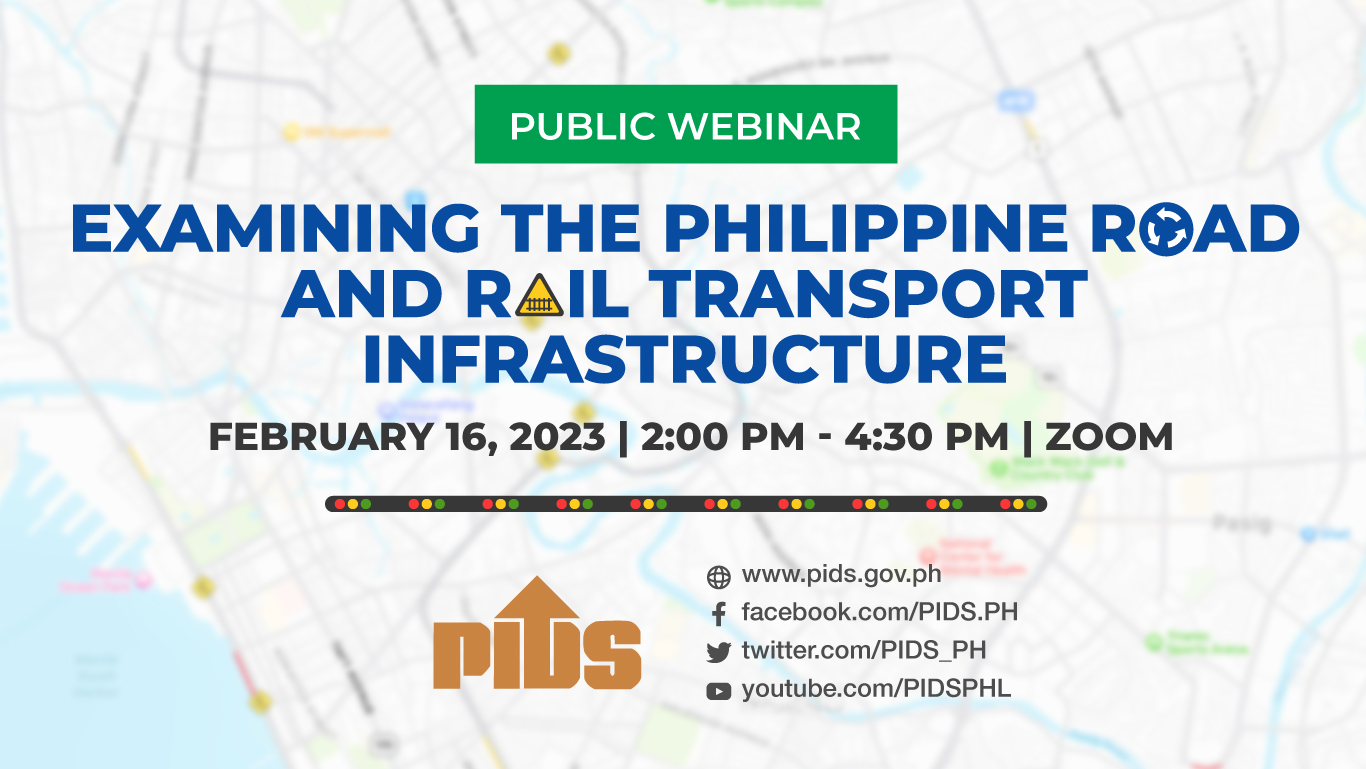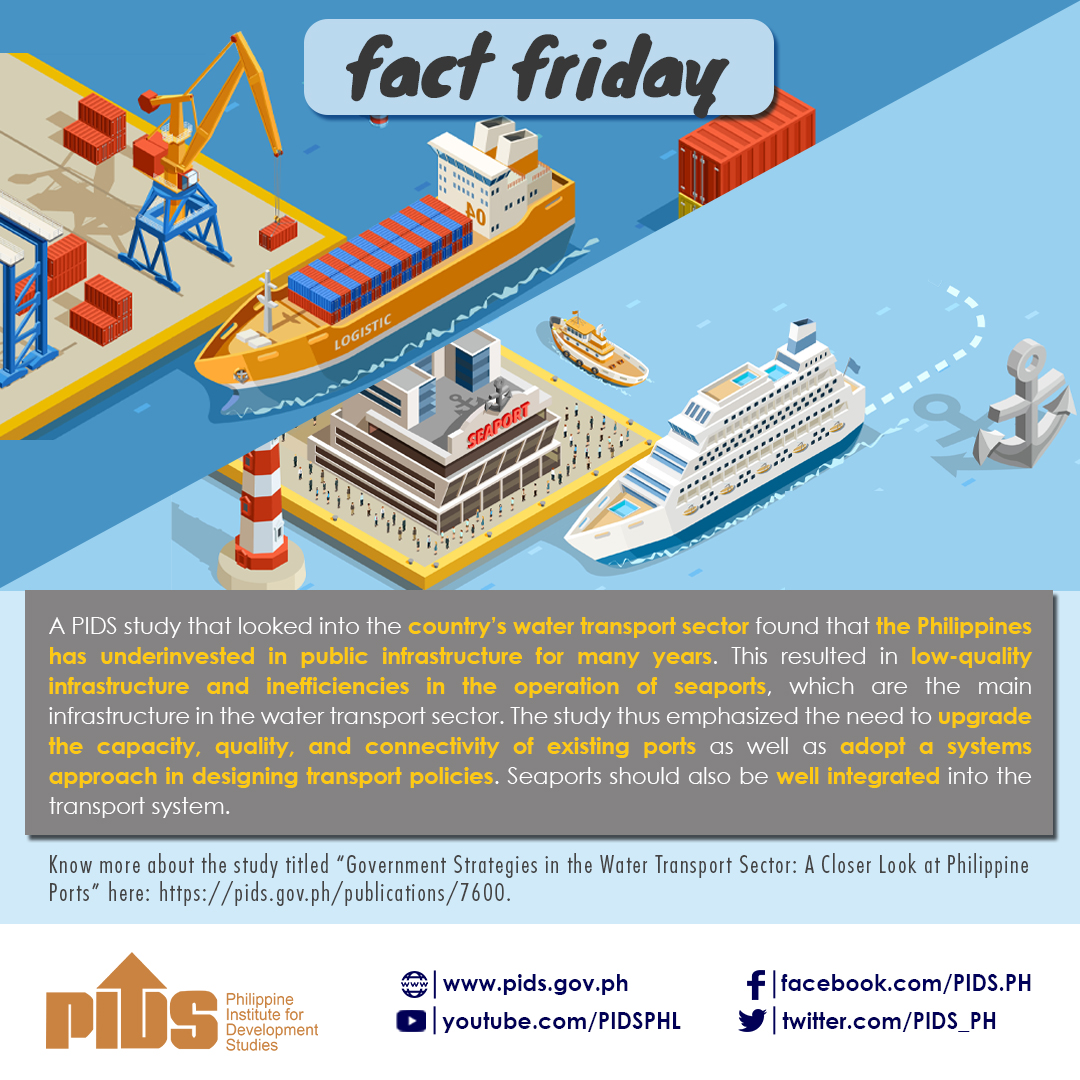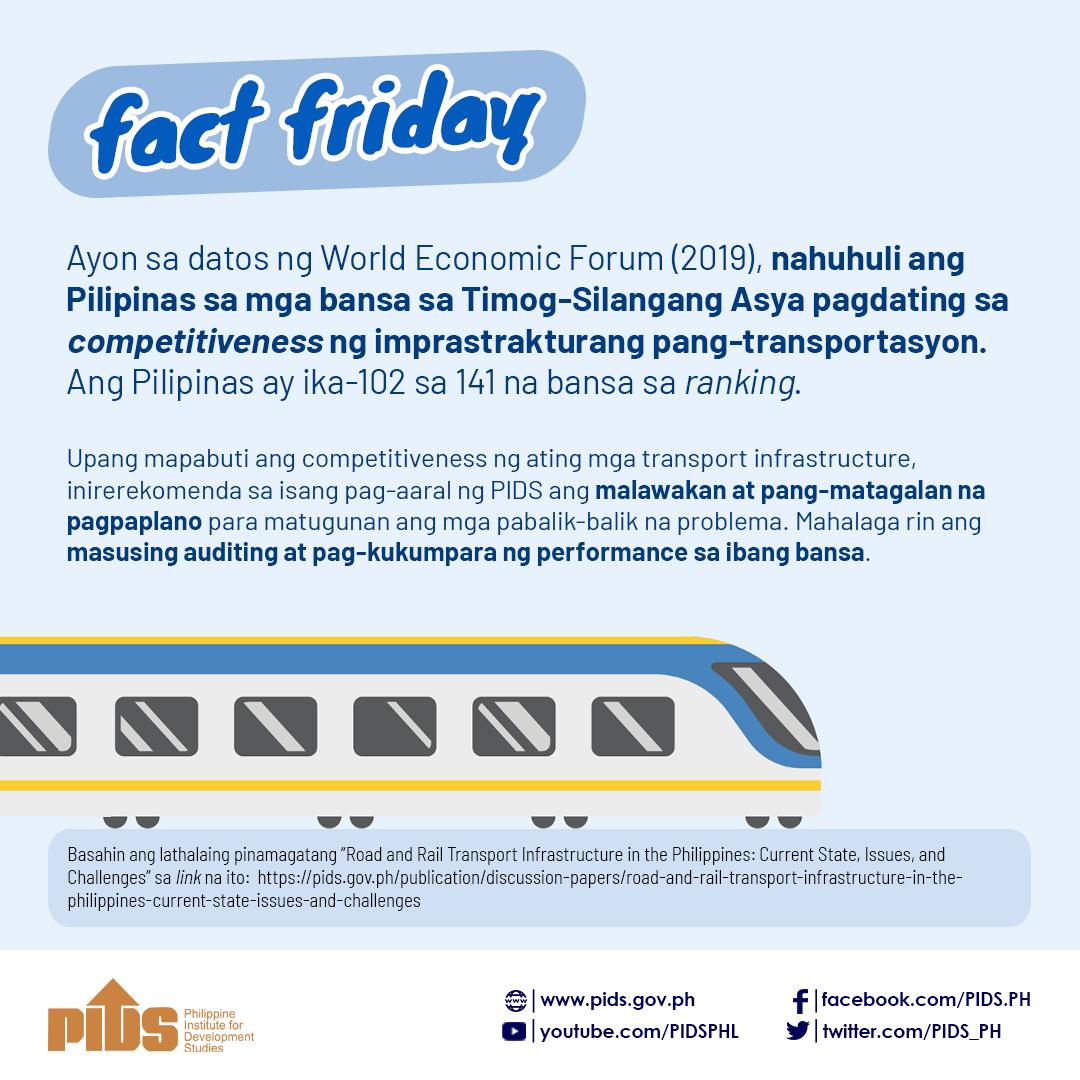The seven month-long truck ban last year in Metro Manila cost the national economy around PHP 43.85 billion. But while the country`s leaders insist that the operation has normalized in the ports since February 2015, there are complex problems with port congestion and underutilization that need urgent attention.
A recent policy note released by state think tank Philippine Institute for Development Studies (PIDS), Port Congestion and Underutilization in the Greater Capital Region: Unpacking the Issues, discusses the nature and the root of the port congestion problem and explores various policy options and alternative measures, including the revival of the Philippine National Railway (PNR), to improve current port operations. The policy note was based on a comprehensive study of the logistics chain in the Greater Capital Region.
Of the three major ports in the Greater Capital Region (Manila, Batangas, and Subic), the Port of Manila is widely used and most preferred by shippers, freight forwarders, logistics services providers, and truckers. PIDS President Gilberto Llanto and PIDS research associates Christine Ruth Salazar, Cherry Ann Madriaga, and Ma. Diyina Gem Arbo, together with PIDS consultants Epictetus E. Patalinghug, Alexis M. Fillone, and Noriel C. Tiglao, conducted a series of surveys and focus group discussions to uncover the factors that influence the sectors` choice of port.
Convenience, for example, weighs heavily. Shippers, consignees, and importers cite the proximity of the Port of Manila to their areas of operation as a deciding factor. The rates are also much more affordable, and the immediate availability of concerned government officials make transactions and release of goods much easier to carry out.
The biggest weakness with the Port of Manila, respondents complain, are `red tape` and the Bureau of Customs procedures.
In comparison, issues with the Port of Batangas pertain to the status of several services, including shipping schedules, availability of allied services providers, and cargo handling facilities. Meanwhile, the Port of Subic is cited for its poor shipping schedules and longer travel time to the port.
The authors noted that a comprehensive policy framework is necessary to solve the congestion in the Port of Manila and the underutilization of the Ports of Batangas and Subic. The truck ban revealed that volume restriction alone will not yield a catch-all solution. Considerations have to be factored in to make policies more effective.
Alongside possible incentives, like a price discount mechanism, capacity expansion has to be undertaken and nonprice service attributes such as warehouse proximity have to be counterbalanced. Volume restriction must be complemented by capacitating the other ports, `commensurate to the volume of cargo and transaction that are targeted to be diverted from the Port of Manila.
Moreover, reviving the freight train network from Bicol to La Union as an alternative cargo transport seems more problematic than promising. Not only are the train tracks deteriorating, but the researchers also conclude that the `current level of freight traffic through Batangas is too small to consider it a major source of potential base traffic for freight railway.` Even if the freight railway was restarted, it would only be able to carry a certain amount, thus having a `negligible effect` on the congestion and traffic caused and experienced by the ports.
The researchers recommend a combination of short-term, medium-term and long-term solutions.
In the short term, policymakers can introduce caps, revive the PNR freight operation, and establish 24-hour web-based booking system to facilitate the logistics chain. But these have to be carried out together with a more strategic actionthe government must invest heavily in capacity building at the ports and the train tracks, as well as rationalize future port development and investment programs in port infrastructure.
Overall, if the Philippines hopes to take full advantage of its economic growth, enhance its position as a transport hub in the region, and position Philippine ports in the global supply chain, the country must implement a strong and comprehensive national multimodal transport and logistics development plan.
A recent policy note released by state think tank Philippine Institute for Development Studies (PIDS), Port Congestion and Underutilization in the Greater Capital Region: Unpacking the Issues, discusses the nature and the root of the port congestion problem and explores various policy options and alternative measures, including the revival of the Philippine National Railway (PNR), to improve current port operations. The policy note was based on a comprehensive study of the logistics chain in the Greater Capital Region.
Of the three major ports in the Greater Capital Region (Manila, Batangas, and Subic), the Port of Manila is widely used and most preferred by shippers, freight forwarders, logistics services providers, and truckers. PIDS President Gilberto Llanto and PIDS research associates Christine Ruth Salazar, Cherry Ann Madriaga, and Ma. Diyina Gem Arbo, together with PIDS consultants Epictetus E. Patalinghug, Alexis M. Fillone, and Noriel C. Tiglao, conducted a series of surveys and focus group discussions to uncover the factors that influence the sectors` choice of port.
Convenience, for example, weighs heavily. Shippers, consignees, and importers cite the proximity of the Port of Manila to their areas of operation as a deciding factor. The rates are also much more affordable, and the immediate availability of concerned government officials make transactions and release of goods much easier to carry out.
The biggest weakness with the Port of Manila, respondents complain, are `red tape` and the Bureau of Customs procedures.
In comparison, issues with the Port of Batangas pertain to the status of several services, including shipping schedules, availability of allied services providers, and cargo handling facilities. Meanwhile, the Port of Subic is cited for its poor shipping schedules and longer travel time to the port.
The authors noted that a comprehensive policy framework is necessary to solve the congestion in the Port of Manila and the underutilization of the Ports of Batangas and Subic. The truck ban revealed that volume restriction alone will not yield a catch-all solution. Considerations have to be factored in to make policies more effective.
Alongside possible incentives, like a price discount mechanism, capacity expansion has to be undertaken and nonprice service attributes such as warehouse proximity have to be counterbalanced. Volume restriction must be complemented by capacitating the other ports, `commensurate to the volume of cargo and transaction that are targeted to be diverted from the Port of Manila.
Moreover, reviving the freight train network from Bicol to La Union as an alternative cargo transport seems more problematic than promising. Not only are the train tracks deteriorating, but the researchers also conclude that the `current level of freight traffic through Batangas is too small to consider it a major source of potential base traffic for freight railway.` Even if the freight railway was restarted, it would only be able to carry a certain amount, thus having a `negligible effect` on the congestion and traffic caused and experienced by the ports.
The researchers recommend a combination of short-term, medium-term and long-term solutions.
In the short term, policymakers can introduce caps, revive the PNR freight operation, and establish 24-hour web-based booking system to facilitate the logistics chain. But these have to be carried out together with a more strategic actionthe government must invest heavily in capacity building at the ports and the train tracks, as well as rationalize future port development and investment programs in port infrastructure.
Overall, if the Philippines hopes to take full advantage of its economic growth, enhance its position as a transport hub in the region, and position Philippine ports in the global supply chain, the country must implement a strong and comprehensive national multimodal transport and logistics development plan.

